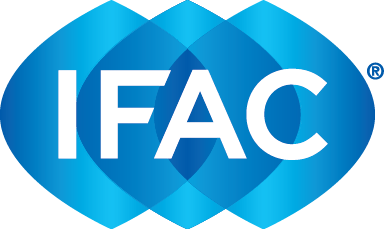The most outstanding aspect of the recent Mobile World Congress in Barcelona was the changes in consumer products, with new features on mobile phones and connected apps. Many other developments will have a significant impact: changes in basic technology, advances in 5G communications, the possibilities of big data, the Internet of Things—each Mobile Congress introduces increasingly significant advances.
Although it often seems that we’ve surely reached a financially viable limit on new features for products, technology features continue to increase exponentially. We receive technological change directly as consumers of increasingly sophisticated products and services, with applications that quickly become part of our daily lives. But it is the advances in basic technology, often only comprehensible to the most specialized engineers that allow extraordinarily novel applications to be subsequently produced.
Constant progress in the technology, information, and communications systems affects all companies. Not only those where technology is the basis of company performance but also companies that use this technology in their internal organization, forming part of their products or services, or where technology is an essential element for contacting and communicating with clients, and indispensable.
Auditors, tax specialists, lawyers, and other professionals providing services to companies have to react to technological advances. They must be up to date and familiar with them these advances. The technological environment for professional practice is changing greatly.
There are three areas where professionals, and by extension professional service firms, must pay attention. First, those aspects relating to communications. A suitable telecommunications infrastructure must allow features such as easy access to databases (both of clients and third parties), the connectivity of clients to equipment, and access to the internet and social networks. Communications are also a basic instrument when considering cloud solutions or telecommuting.
Second, great attention should be paid to the tools directly related to providing services to clients. These include programs used for audit or in preparing annual accounts and taxes, as well as tools for automatic accounting of documents, databases or repositories for standard forms, and so on. Many companies develop solutions aimed at facilitating the work of professional firms, and national and international companies increasingly offer new products specifically aimed at these professionals.
Third, there are solutions facilitating the internal management of the firm or office: document management, file and client control, customer relationship management, enterprise resource planning, business intelligence, etc. In short, tools that enable leaner internal management and help provide decision-useful information.
It is clear that there are a multitude of solutions requiring constant attention by professionals and firms in order to stay up to date. Everything changes very quickly, with the appearance of new products rendering the previous ones obsolete. The only certain aspect is change.
At times, professionals are delighted with the features of the latest device for personal use but who, within the firm, continue to have technologically obsolete structures. The argument (or excuse) for this is usually based on cost, or the incorrect view that the services provided and the value to clients are unrelated to technology. Seeing how advances in technology affect us so greatly and in so many activities, it is hard to claim that auditors, advisors, and lawyers can get by ignoring such changes.
Determining suitable technological solutions at any time involves time and effort. But above all, it requires a state of mind. For partners or managers, this can mean making decisions in an area they are not experts in and they, therefore, face uncertainty and inconvenience of adapting to new methods and ways of working.
However, incorporating technology is a strategic issue. Despite the difficulties, we cannot stay away from technological change. The solutions of today will not be valid in the near future, but they will serve as a basis to better prepare us for adapting to new environments than competitors failing to embrace technological advances.
In short, we have to stay up to date. It is not a question of being over the top with technology—you don’t need to incorporate the latest available product or service—but nor should we become obsolete, like those who defended fax machines as the definitive advance in communications.
One final recommendation: we are a group that values technology alternatives applicable to our professional work environments, whether in communications, providing services, or internal organization. This group includes not only partners and managers but early-career professionals. Solutions that may seem complicated to some will no doubt be seen by millennials as being intuitive and user-friendly.

